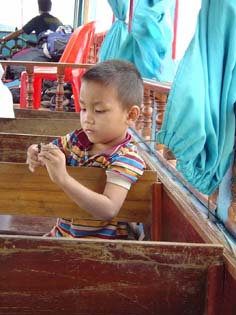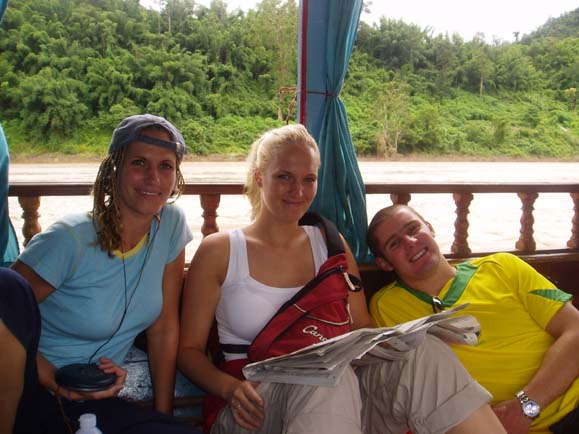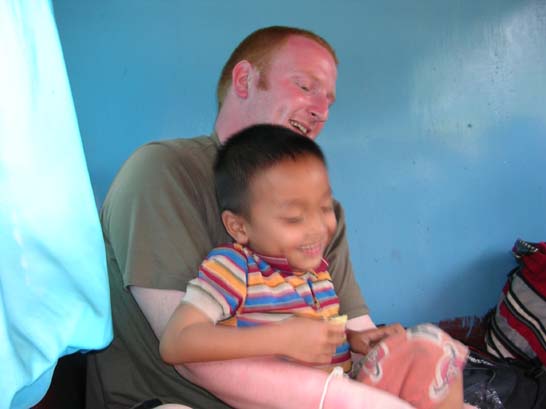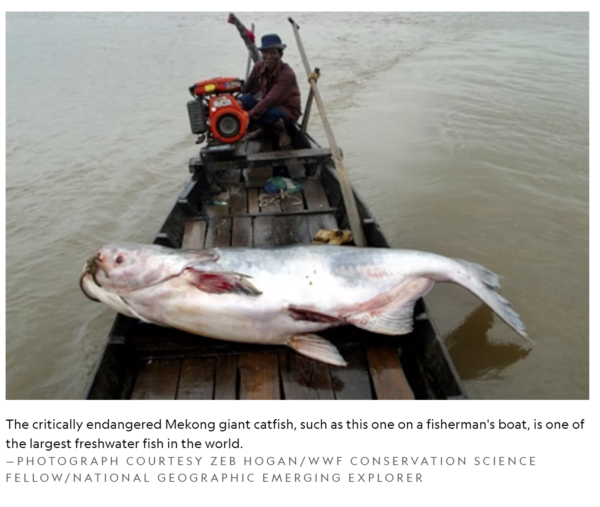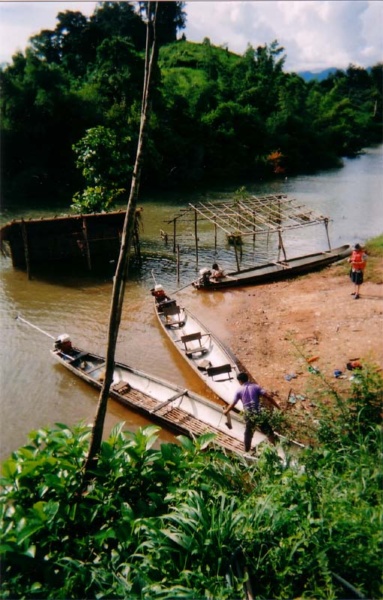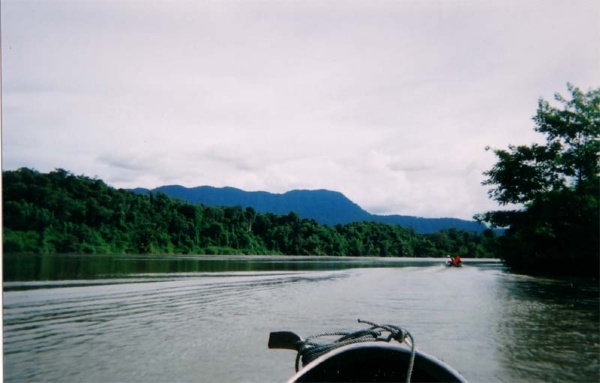Diary Entry
I leave Thailand in a small shack with rain dripping through the roof. Ian had already taken care of our visas in Chiang Mai. Leaving the country is not a problem and there is no sign of drug detection dogs or serious measures to prevent drug smuggling.
One dollar = 10,000 kip. My wallet is bursting
If the controls look like this, smugglers in the Golden Triangle don’t even have to bother to bring their goods to another country via secret routes.
After we have officially entered Laos and gotten the entry stamp and Laotian kip (10,000 kip = $1, my wallet is about to burst after exchanging $20) on the opposite bank, we board a boat again, a family houseboat, with us where we will travel the Mekong towards Luang Prabang for two days.
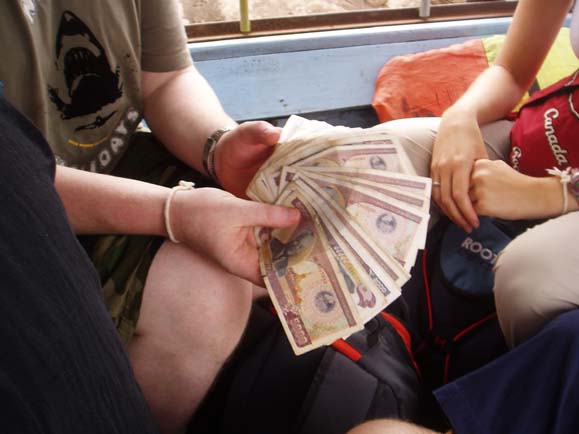
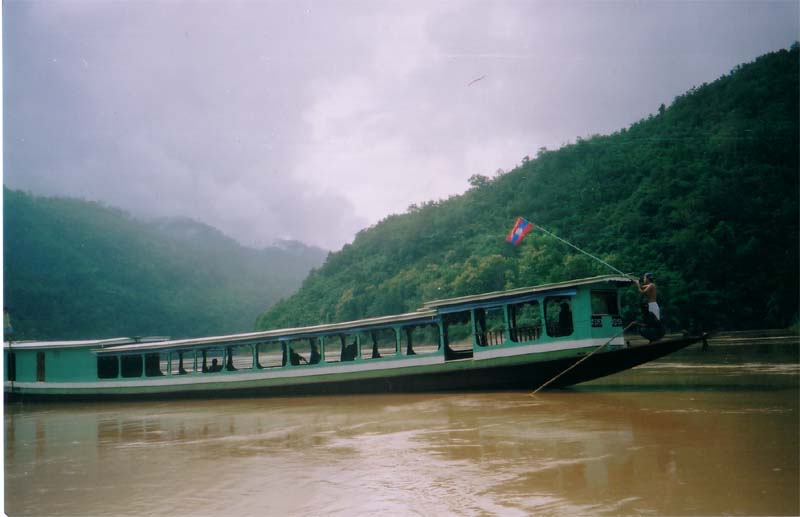
The little boy of the family enthusiastically plays with the straps of our trekking backpacks while we make ourselves comfortable in the middle of the boat.
Since the boat is basically a house, we have to take off our shoes. The long wooden boat has a small driver’s cabin at the bow, where the father or the eldest son guides the ship. Each ship has a small bouquet of flowers or a plant on the bow instead of a “figurehead“. Behind the driver’s cab, where our luggage is also kept, there is a small free area, which one enters over a plank from land.

During the journey you can set up a few chairs here and enjoy the wind. Behind it begins the covered main lounge, which takes up more than half of the ship.
A few benches, behind them a carpeted area, was our main unfolding space. At the stern of the ship there is a small toilet cubicle and a small room for the family.
The scenery is incredible.
My adventurous spirit is dancing
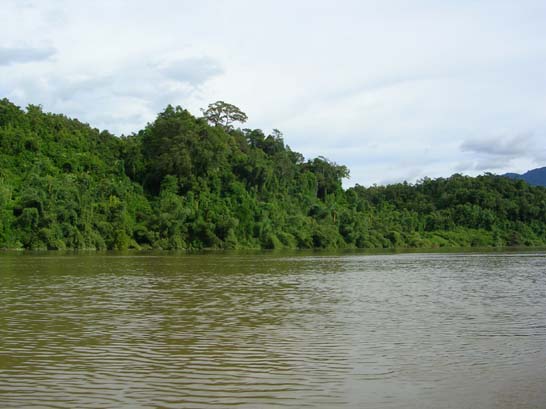
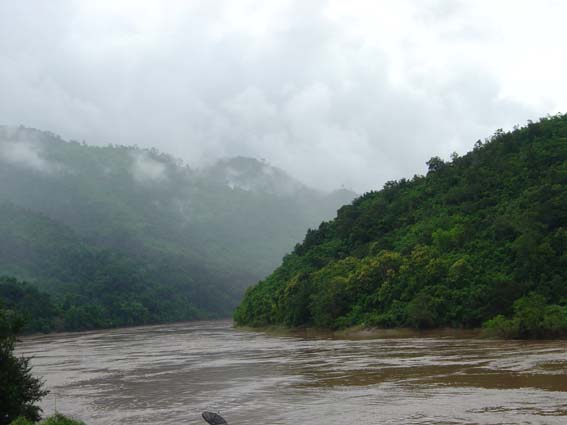
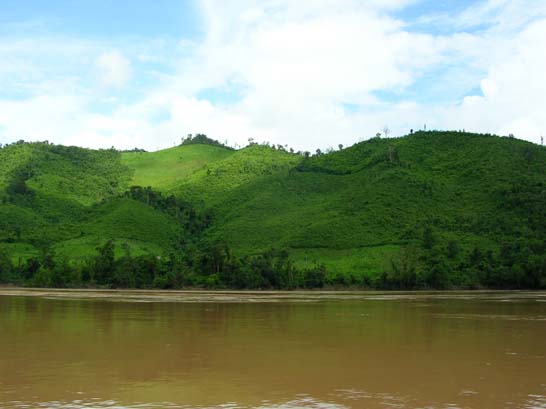
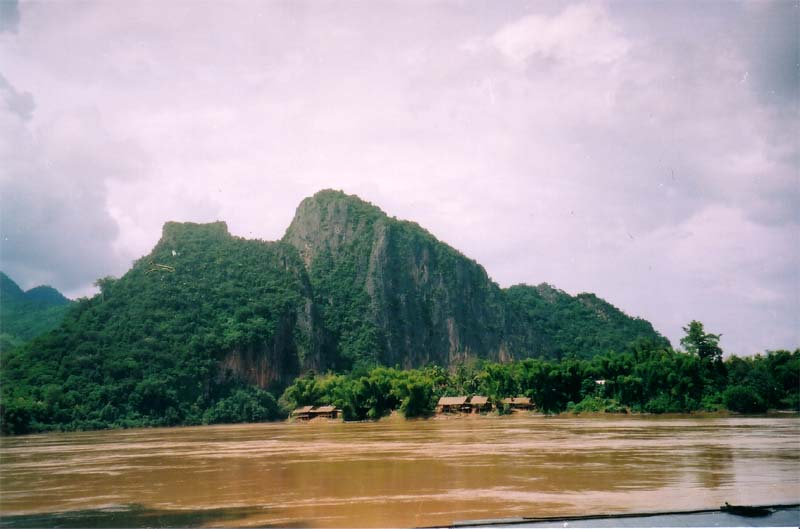
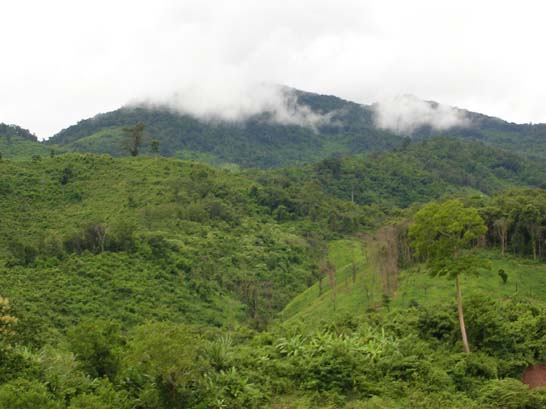
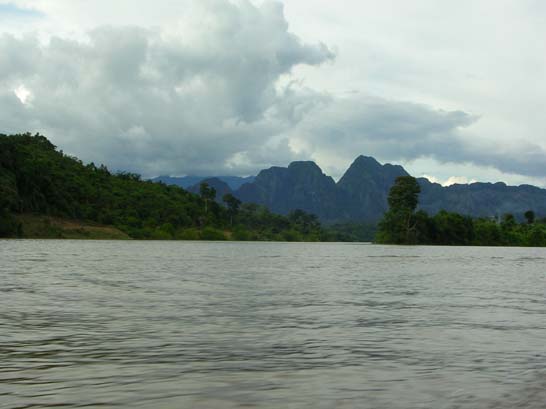
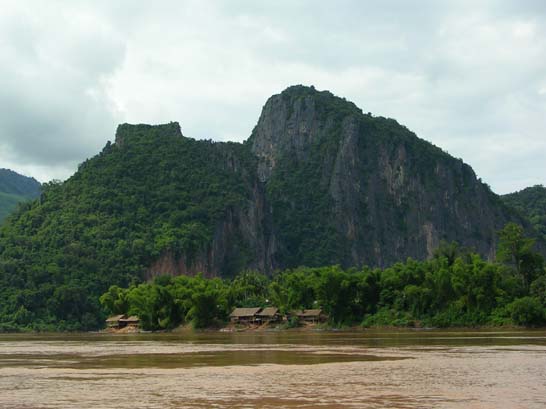
I am so excited about this ride of wonders
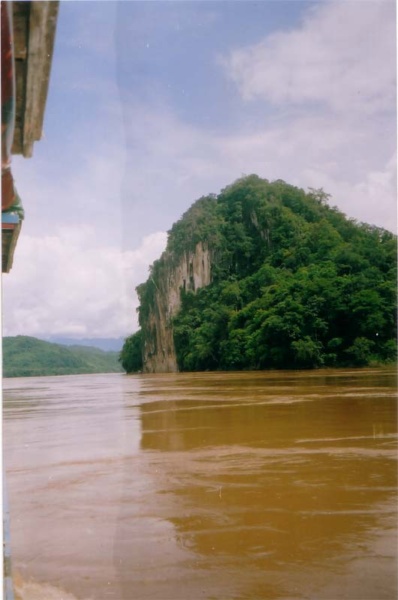
The drive is long and the landscape that slowly passes us is magnificent. We quickly leave any signs of civilization behind. Around us are forested mountains that are shrouded in clouds when the sun isn’t shining. Large heron-like birds stand on small sandbanks. Lianas hang from tropical trees down into the water.
The animals that I only know from the zoo live here
The boatman must keep an eye on the river, because often in the middle of the Mekong rocks protrude from the surface; In general, the Mekong is not very deep, even if the largest freshwater fish in the world live here.
There are even life jackets on board. We think it’s great to sit on.
A trip in a houseboat
The largest freshwater fish in the world
On the way we only pass small fishing villages that still live under the simplest of conditions. The fishermen wave to us as we drive past, as all Asians generally greet us on river banks or roadsides. We stop in two villages to stretch our feet and buy fruit. The villages consist of a cluster of stilt houses and a small temple.
It has no jetty. You place the plank on the steep muddy embankment and have to fight your way up. You’ll sink ankle-deep in the mud or, if you’re too clumsy, you’ll happily slide back down the slope into the river.
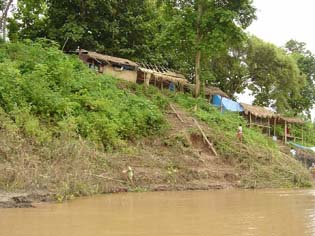

We see the men building small dugouts, sawing boards for building houses and children eyeing us curiously. We see novice monks in the temples reading scriptures to large village audiences. I learn that this is a test on the way to becoming a monk.
Water buffalo graze between the huts and everywhere chickens and pigs run in front of our feet. We buy bananas, coconuts or biscuits from the villagers.
There are no roads to the villages except the river

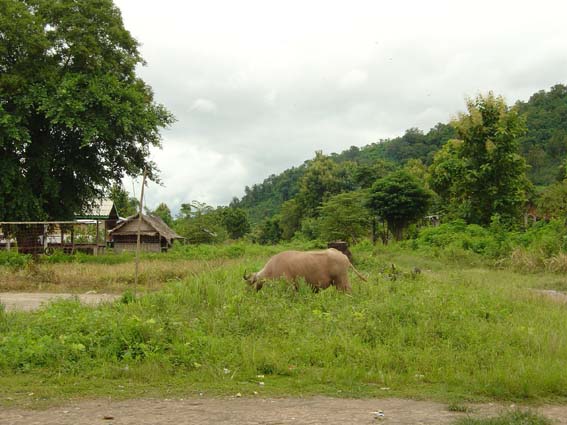
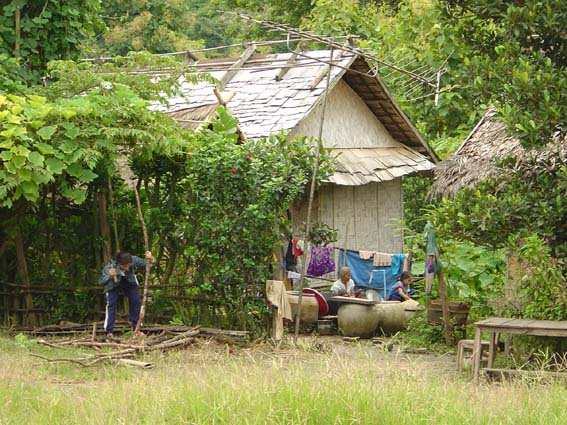
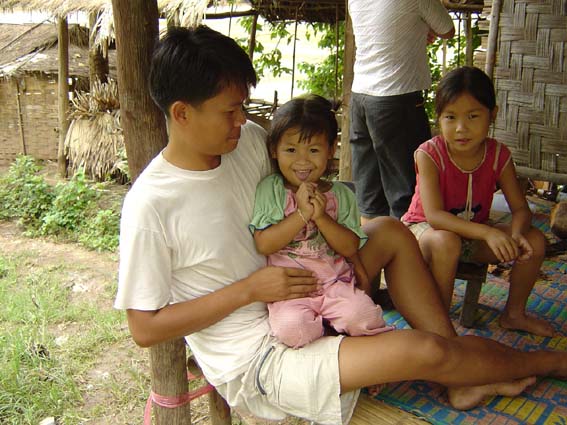
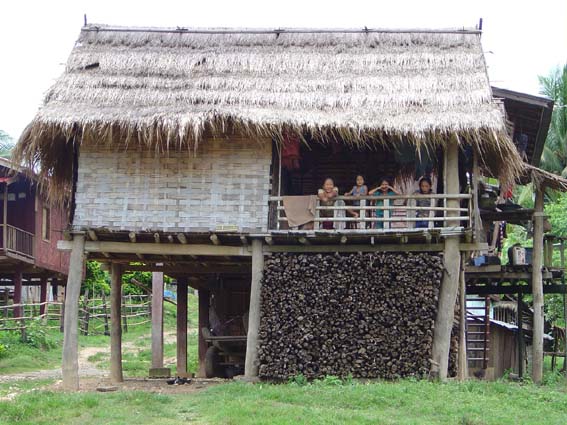
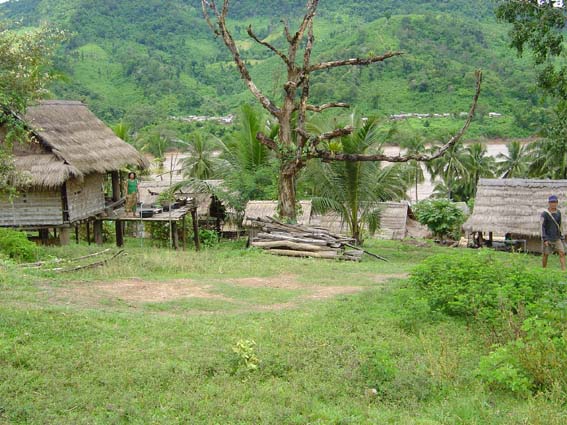
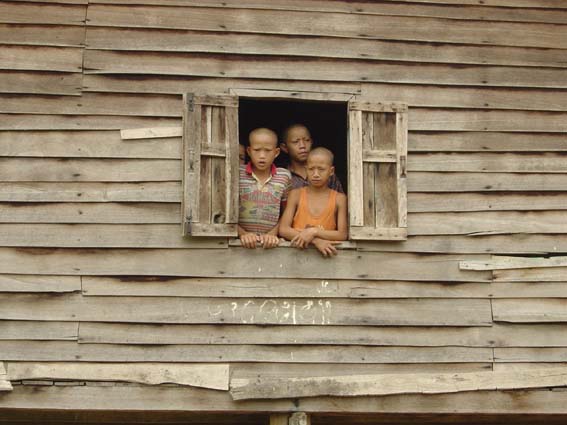


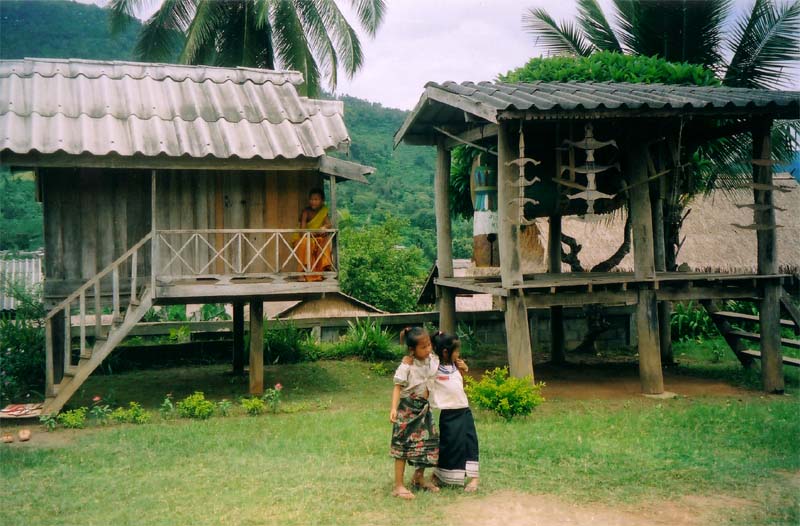
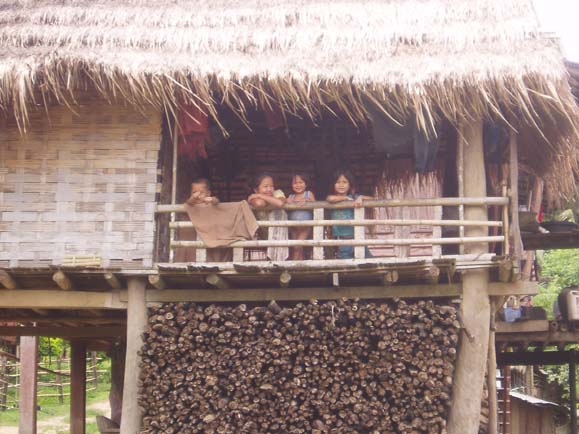

I spend the rest of the day on deck, letting the wind blow around my ears, the sun burning my skin and sipping my coconut. I chat with our guide, Mister Wong, who will be with us until the end of our stay in Luang Prabang. He has a handy little notebook in which he has translated many terms of his language into English. I write down a lot of things and he explains to me how they are pronounced so that I can write them down in German phonetic transcription.
The numbers are also remarkably simple. Numbers 1-10: Nung, Song, Sam, Sih, Hah, Hok, Chet, Paat, Kao, Sip.
Sip et (11), Sip song (12), Sip sam (13)… Sao et (21), Sao song (22), Sam et (31), Sam song (32), … Sih et (41) … Hah et (51) … Hoi et (101), Hoi sip et (111), Phang et (1001), Phang hoi sip et (1111), Kao hoi kao sip kao phang kao hoi kao sip kao (999.999).
No matter where I was and where I went, people became even more cordial when I answered them in their native language. On the boat trip I have enough time to learn the little vocabulary.
In the evening we dock at a village where we spend the night. We find a small guesthouse where we stay. The view from the village of Ban Pen is over a meander of the Mekong, and some higher mountains.
| Sabaidih | Hello |
| Sabaidih baw | How are you? |
| Khop chai | Thank you |
| Khop chai lai lai | Thank you very much |
| Khoi sabaidih khop chai | I am fine, thank you |
| Chao sen yang | What is your name? |
| Chao ma tea sai | Where are you from? |
| Sok di dö | Good luck! |
| Baw pen yang | Doesn’t matter |
| Kho tot | Excuse me |
| Nei daio khop chai | No thanks (“I don’t want to buy your stuff, but thanks for asking“) |
| Sokli! | Cheers! |
| Bob kan mai | Goodbye |
| La gon | Farewell |
For the first time I’m learning the lesson that if you speak even a little bit of the local language, you will be treated much more cordially in a country.
I will use this knowledge on all my trips in the future.
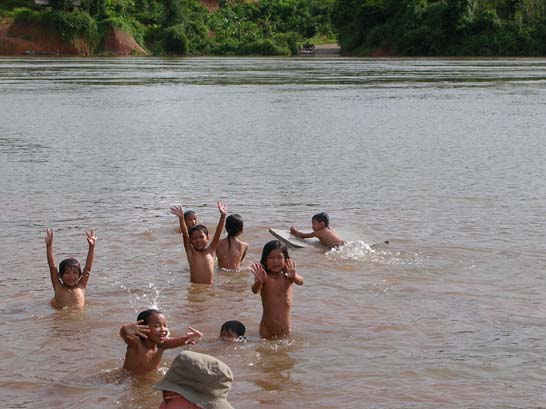

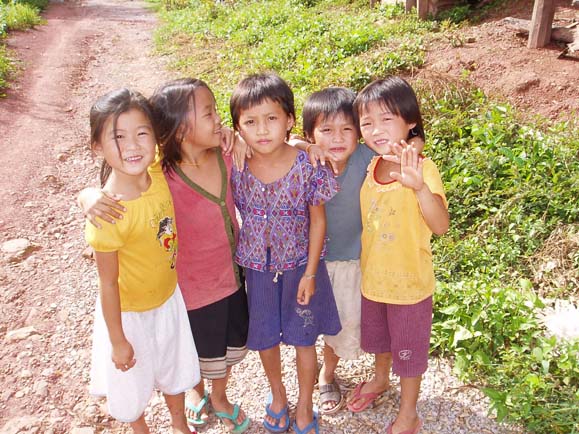
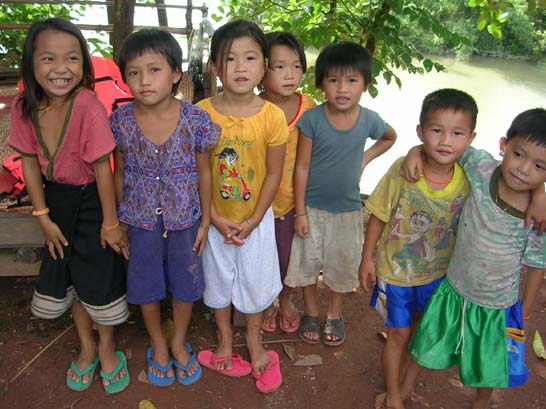
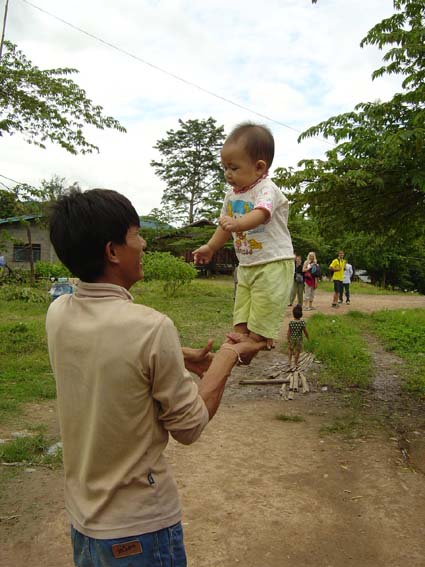
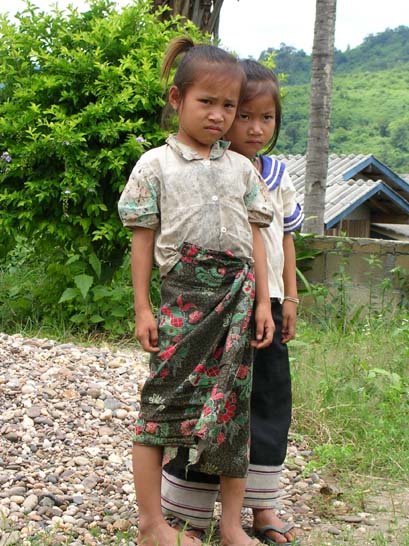
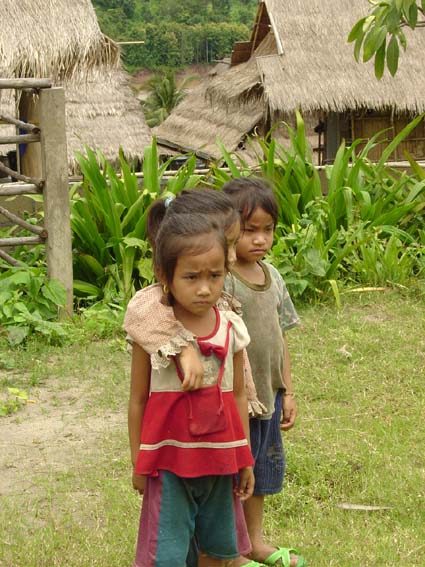
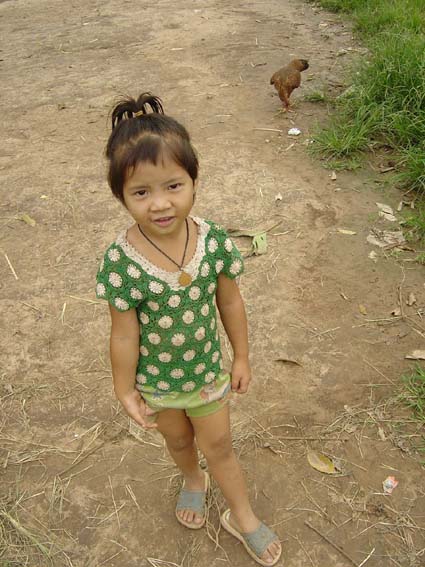
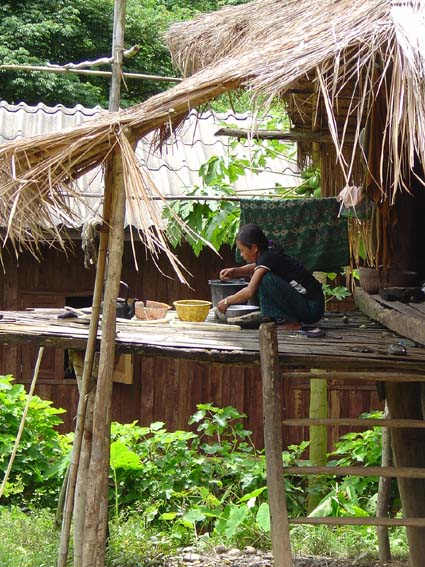

We also explore the village with Mr. Wong and climb up a hill where the village temple is located. The eyes of the villagers follow us curiously.
The guest house is just a larger wooden house with a few rooms, the “bathrooms” are pathetic, the windows cannot be closed. At least there are mosquito nets to compensate. But hey, we’re in the jungle. That’s part of the adventure.
A candy falls out of my pocket, two minutes later, when I want to pick it up, it is already in the grip of hundreds of small ants, who are transporting it away via a large ant trail. There is a sign on my door that says “Welcome to our Questhouse!” Indeed it is!

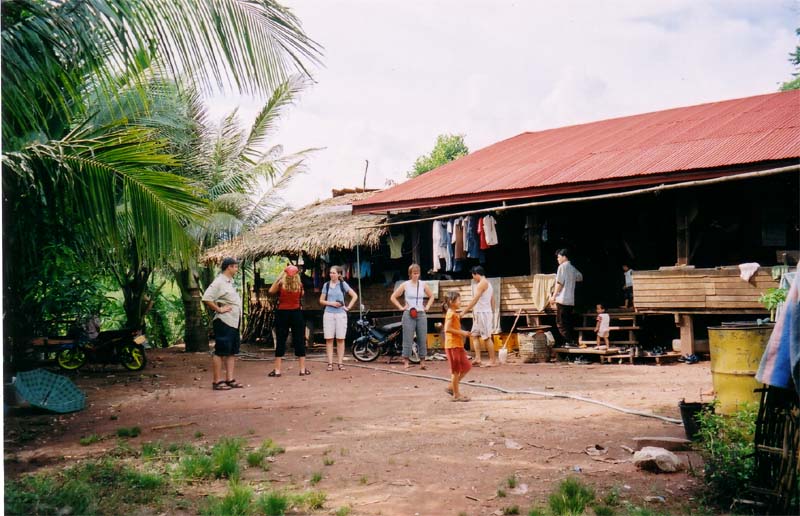

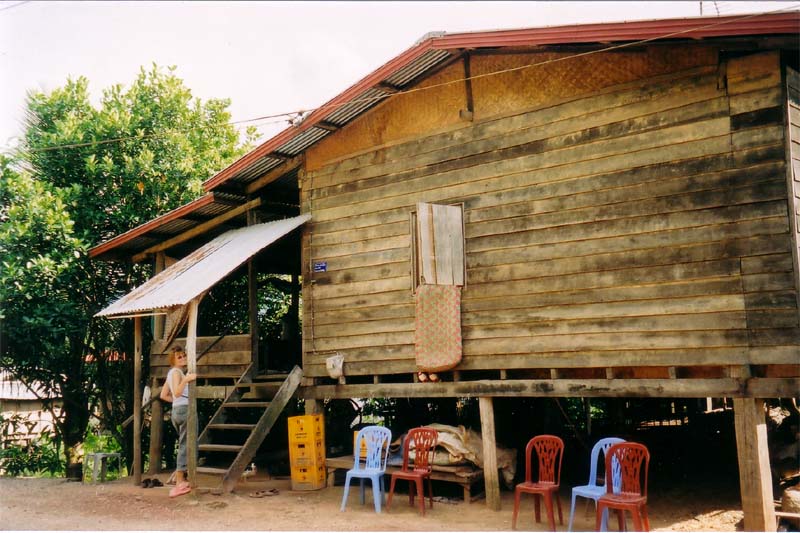
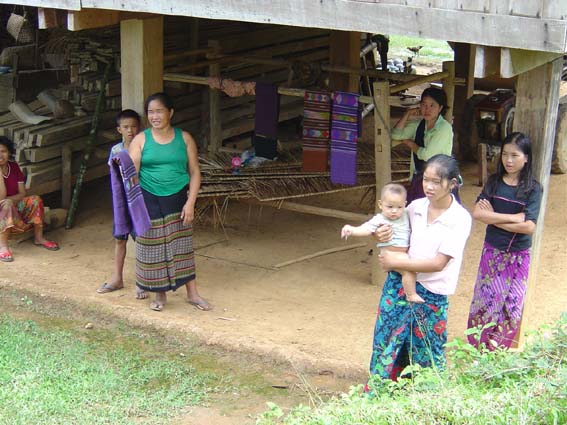
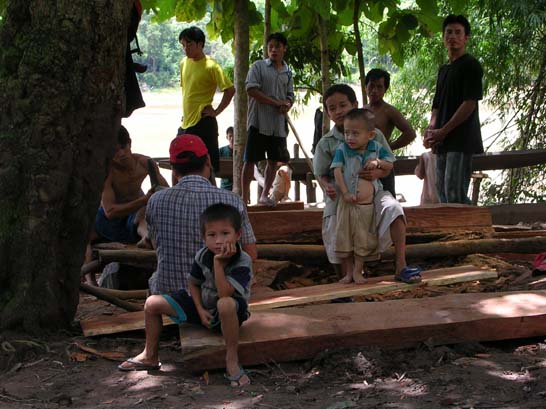
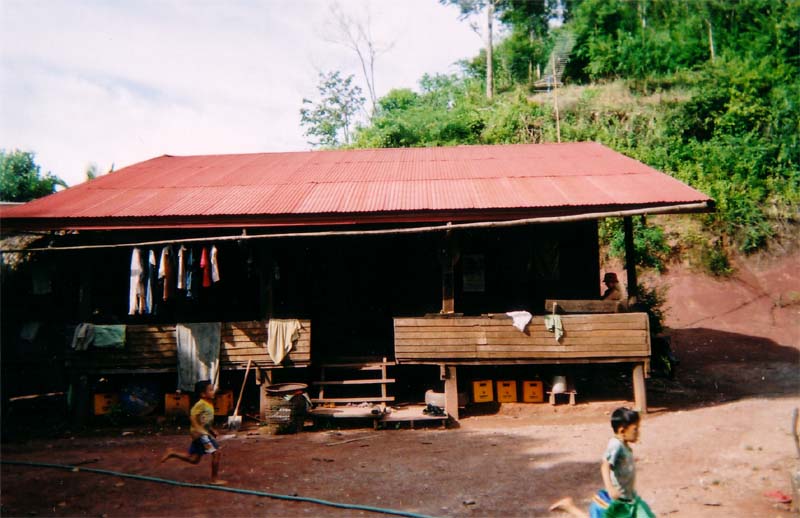
A man offers us a ride on his boat across the river. The boat is a long sheet metal hull to which an outboard motor has been attached. Mister Wong explains to us that the tubs are kerosene tanks from American warplanes.
During the Vietnam War, the Americans would fly attacks just beyond the country’s border or even into Laotian territory if the Americans suspected Viet Cong there. Laos also suffered enormously from the terrible war.
We don’t say no and accept the offer. We zoom across the water at rocket speed. Who would have thought that the canisters we sit in were once hung in the air on American bombers?
The Vietnam War is still leaving its mark in Laos
At night all the insect species of the jungle gather around the lights, moths as big as sparrows chase through the corridors like little bombers. Butterflies and mosquitoes are busily scavenged by the ubiquitous little pale geckos. We eat well in the “lounge”, drink some Beer Lao, watch the spectacle by the lamps and smack the mosquitoes on our arms. From time to time a bat also flutters past us to make a few circles near the lights and disappear again into the dark night. Sometimes the bat is as big as a cat. That must be a flying fox.
Here it is usually dark from seven o’clock and after ten no one is awake. Since there is no nightlife here either, we are in bed quite early.
It gets noisy in the jungle at night. Insects, amphibians and monkeys join in a deafening orchestra.
The morning is fresh. Wafts of mist hang over the river. Fog drifts past the mountains. Our journey continues.

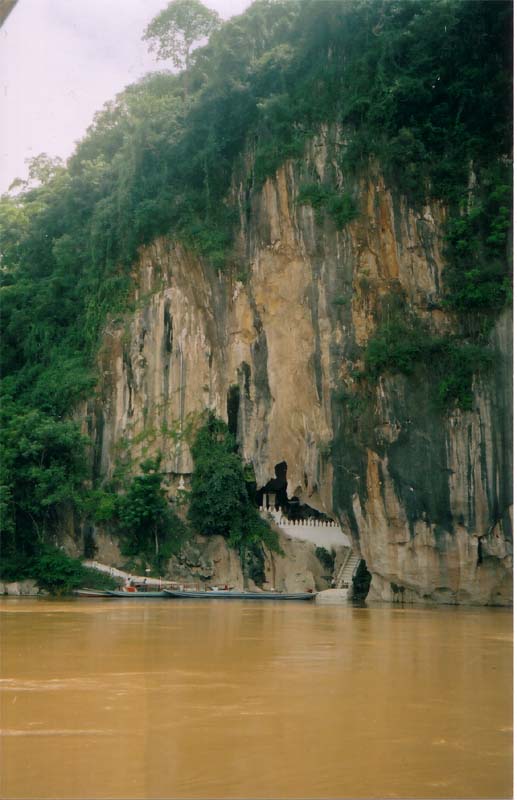
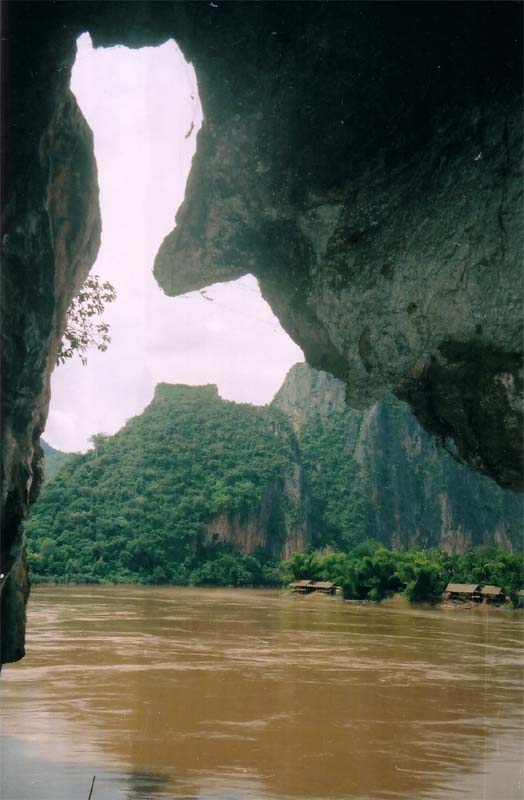
Around noon we stop just before Luang Prabang to visit special Buddha caves that can only be reached from the river. One of the two caves is located quite high up; one has to climb a long stretch of old stairs to reach the cave. Inside it is pitch black; I had brought my flashlight with me on Mister Wong’s advice. The cave does not go deep into the mountain, but all the niches in the last two chambers are filled with statues from all ages. The room has only been open to the public for thirty years, explains Mister Wong. Before that it was solely a prayer room for the monks.

The lower cave is actually just a walled depression in the rock face. There are also masses of Buddhas here. Between some we find a sleeping python.
Altogether there are around five thousand Buddhas in these caves, which are five to five hundred years old.
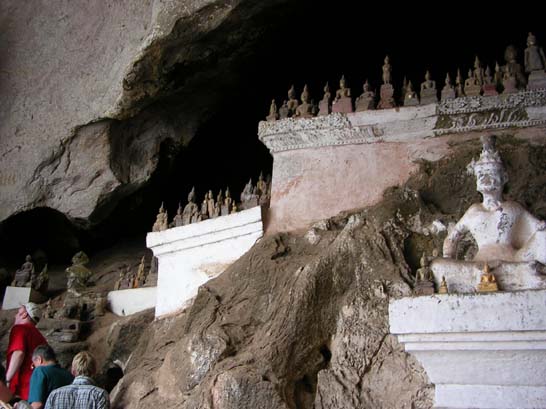
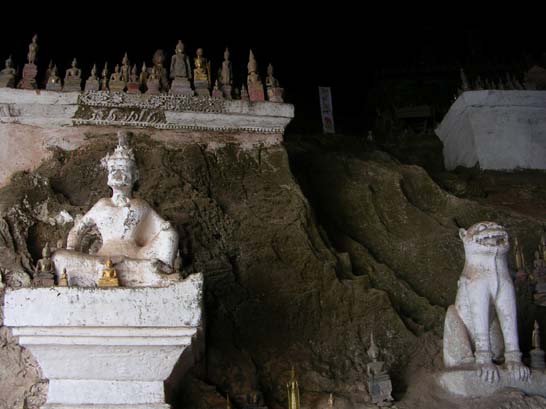
Shortly before Luang Prabang we see a rain front approaching us from the north. As we set foot on land, it started to rain. In the pouring rain we load our luggage onto a couple of tuk-tuks that take us to our guesthouse. As soon as we reach that, the rain is already over. And the Guesthouse exceeds all expectations.
It’s a cute cluster of cottages in a circle around a small garden with a pond. Each stilt house, designed for two people, has a small veranda and a luxurious bathroom at the back of the house. The guesthouse is located outside the small town on the Nam Khan River, which flows into the Mekong here. Next we get to know Luang Prabang.

